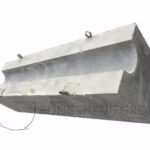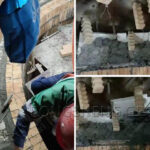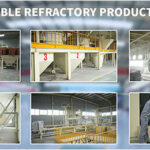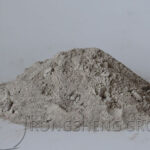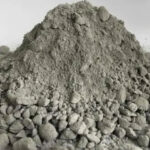With the development of the cement industry, in order to adapt to the requirements of large-scale, long-lasting, energy-saving and environmentally friendly cement industry, the requirements for refractory materials for the lining of large and medium-sized cement kilns are becoming increasingly stringent. Existing refractory materials can no longer meet production needs in actual use. Especially at the kiln mouth, grate cooler, coal injection pipe, smoke chamber, top of preheater and other parts. Due to high-temperature thermal stress, rapid cooling and rapid hot air flow impact, high-temperature cement clinker wear and high-temperature gas alkali corrosion, it is easy to cause cracking, peeling and wear of the lining, making it difficult to meet the requirement of the kiln age being more than one year. Moreover, the corundum-silicon nitride-silicon carbide composite castable used in the tuyere belt of the ironmaking blast furnace can be poured and constructed quickly. However, its alkali resistance and thermal shock stability cannot meet the requirements for refractory materials for large and medium-sized cement kiln linings.

Therefore, it has become a primary task to prepare a refractory material with strong thermal shock stability, high compressive strength, small thermal expansion coefficient, low thermal conductivity, good alkali resistance and long service life. Long-life silicon nitride combined with silicon carbide thermal shock-resistant castables solves the above technical problems for the blast furnace and cement industry.
Silicon Nitride Combined with Silicon Carbide Thermal Shock Resistant Castable
This castable uses silicon nitride and silicon carbide as the main raw materials and is also supplemented with corundum, activated alumina and other materials. Using composite explosion-proof materials and additives, silicon nitride combined with silicon carbide thermal shock-resistant castables are made. Its raw material composition is as follows:
- Silicon nitride 150-300 mesh, 5-20%.
- Black silicon carbide 100-200 mesh, 10-30%.
- Green silicon carbide 150-300 mesh, 5-20%.
- Tabular corundum, 20-30%.
- White corundum, 15-30%.
- Activated alumina 300-600 mesh, 3-12%.
- Metal aluminum powder 80-150 mesh, 0. 5-3%.
- Heat-resistant steel fiber 5%.
- Metal silicon powder 100-200 mesh, 2-8%
- Aluminate cement 3-6%.
The silicon nitride combined with silicon carbide castable has excellent high-temperature stability, high thermal shock stability (water cooling, 1100°C ≥ 30 times), and high alkali corrosion resistance (level 2 or above). Excellent normal and high-temperature strength and high-temperature material wear resistance. Suitable as long-life (more than one year) large and medium-sized cement kiln lining materials. It is especially suitable for key parts with harsh working conditions such as the kiln mouth, coal injection pipe, cement kiln smoke chamber, grate cooler, and top of the preheater of large and medium-sized cement kilns.
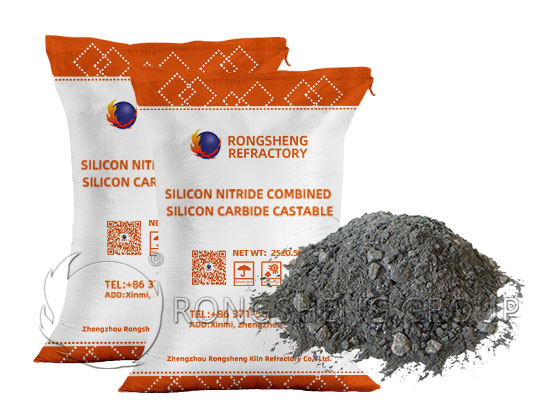
Analysis of the Causes of Peeling, Cracking, and Peeling of Castables for Cement Kiln Burner Linings
The burner is an important process equipment of the cement kiln firing system. It has a great relationship with clinker output and quality, the life of refractory materials in the kiln, clinker coal consumption, environmental protection emissions, etc. The main reason that affects the service life of the burner is the damage of the burner lining castable. How to extend the service life of the burner lining castable is particularly important. The four-channel pulverized coal burner of a cement manufacturer uses Al₂O₃-SiC series low-cement refractory castable as a protective lining with a thickness of 100mm. Serious damage occurred to the burner head and bottom 2 months after it was put into use. The main modes of damage are peeling, cracking and peeling.
Burner Lining Castable Damage
The damage to the burner lining castable is shown in Figure 1. Take a piece of lining castable from the burner that is completed from outside to inside as a sample, and observe the overall condition of the sample. Divide the residual lining sample into four layers from outside to inside according to different colors. The division of residual lining layers is shown in Figure 2.
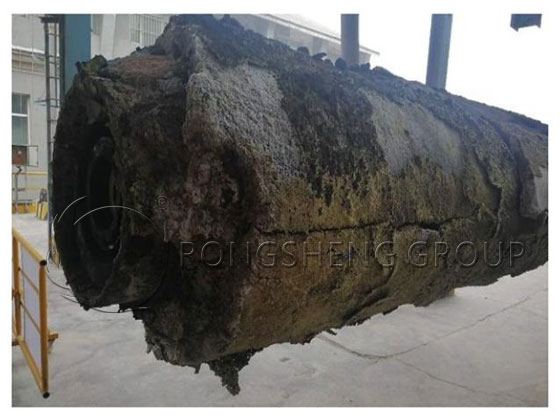

From the appearance of the damaged castable, it can be clearly seen that the first layer is light yellow and has obvious erosion, indicating that a liquid phase has been produced on the surface of the castable. The second layer appears white and has the loosest structure. The castable has completely deteriorated and is basically a crystallized accumulation of alkali salts. Layer 3 appears light black and has a dense structure, and the aggregate particles in the castable components can be seen. Layer 4 appears gray and has a dense structure. No crystalline material is found. The matrix part of the castable and the aggregate particles can be clearly seen.
After combining experiments and analyzing its components, a conclusion is drawn.
- (1) The outer surface of the burner lining castable produces low melting point anorthite and potassium feldspar, which produces a liquid phase at high temperatures, reducing the surface strength of the castable and causing corrosion damage to the castable.
- (2) The middle brushing of high-temperature secondary air damages the SiO₂ film formed by the oxidation of SiC on the surface of the castable, causing alkali salts to enter the castable to form continuous erosion.
- (3) The chemical corrosion damage of the burner mainly comes from K salt, which mainly has two aspects: on the one hand, the K salt that penetrates into the castable reacts with the matrix to generate new compounds, destroying the matrix composition of the castable. On the other hand, due to the density difference of the potassium salt itself, volume expansion occurs after deposition and cooling in the castable matrix. The combined effect of two reasons leads to damage to the castable lining.

